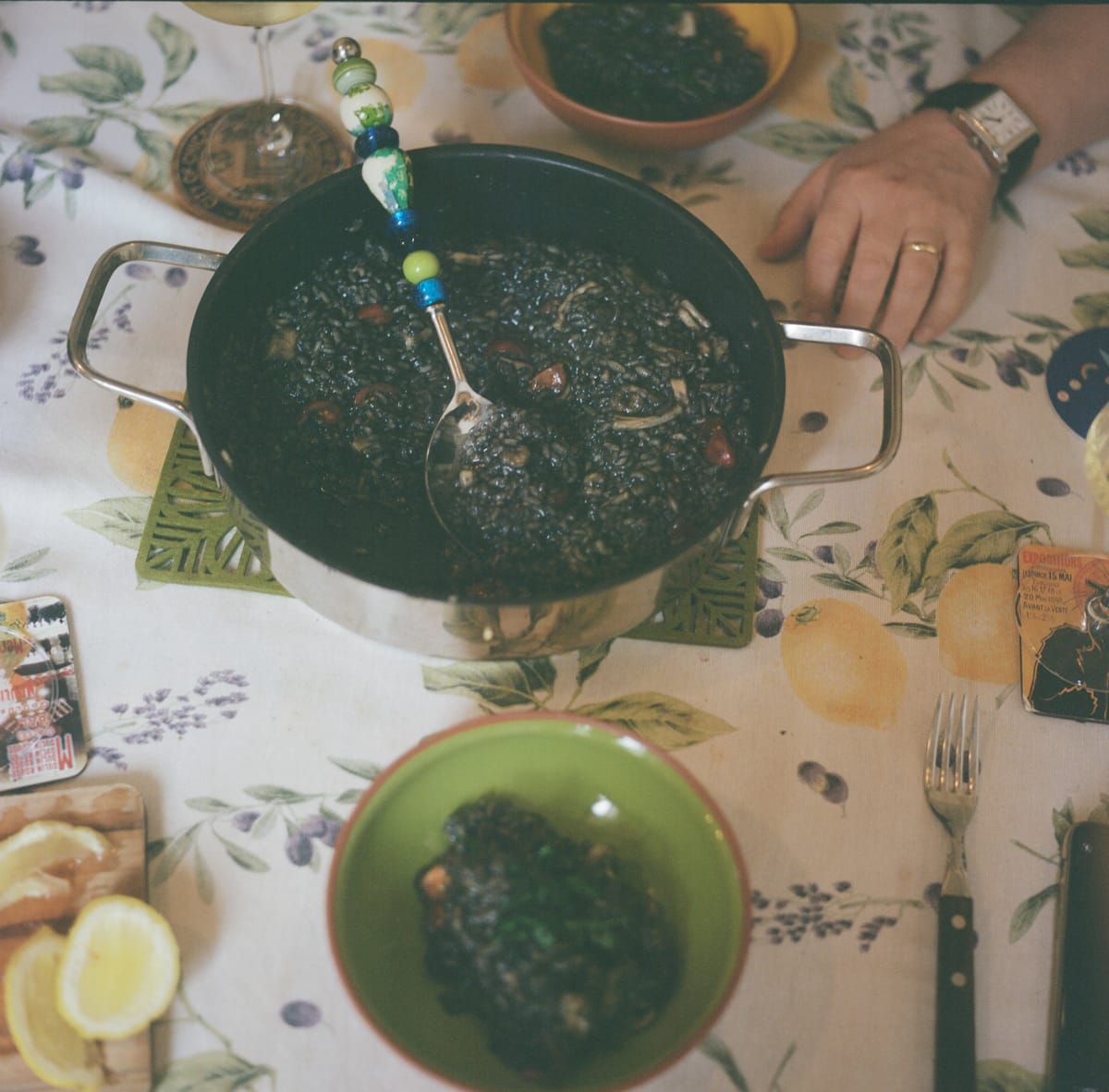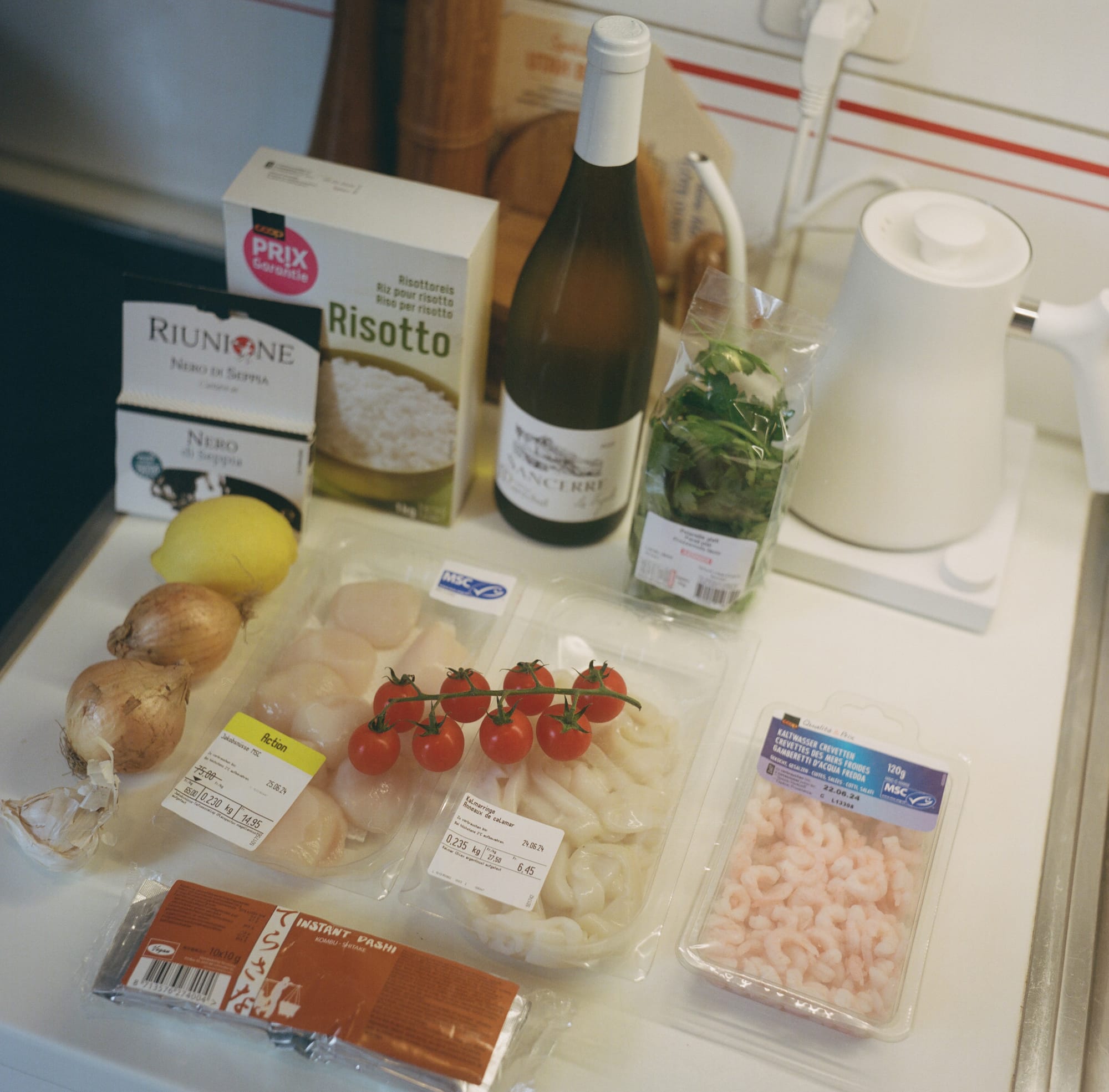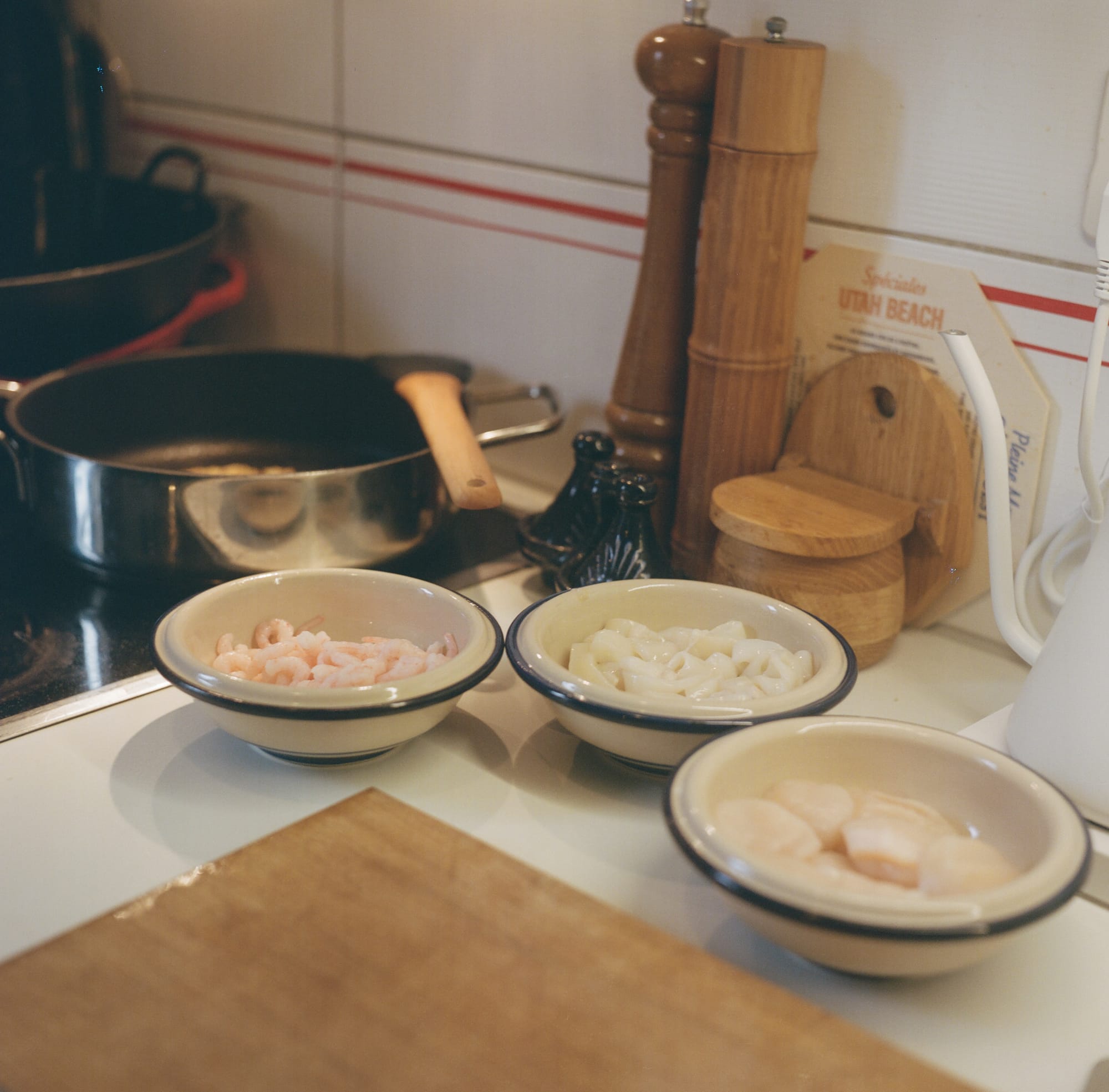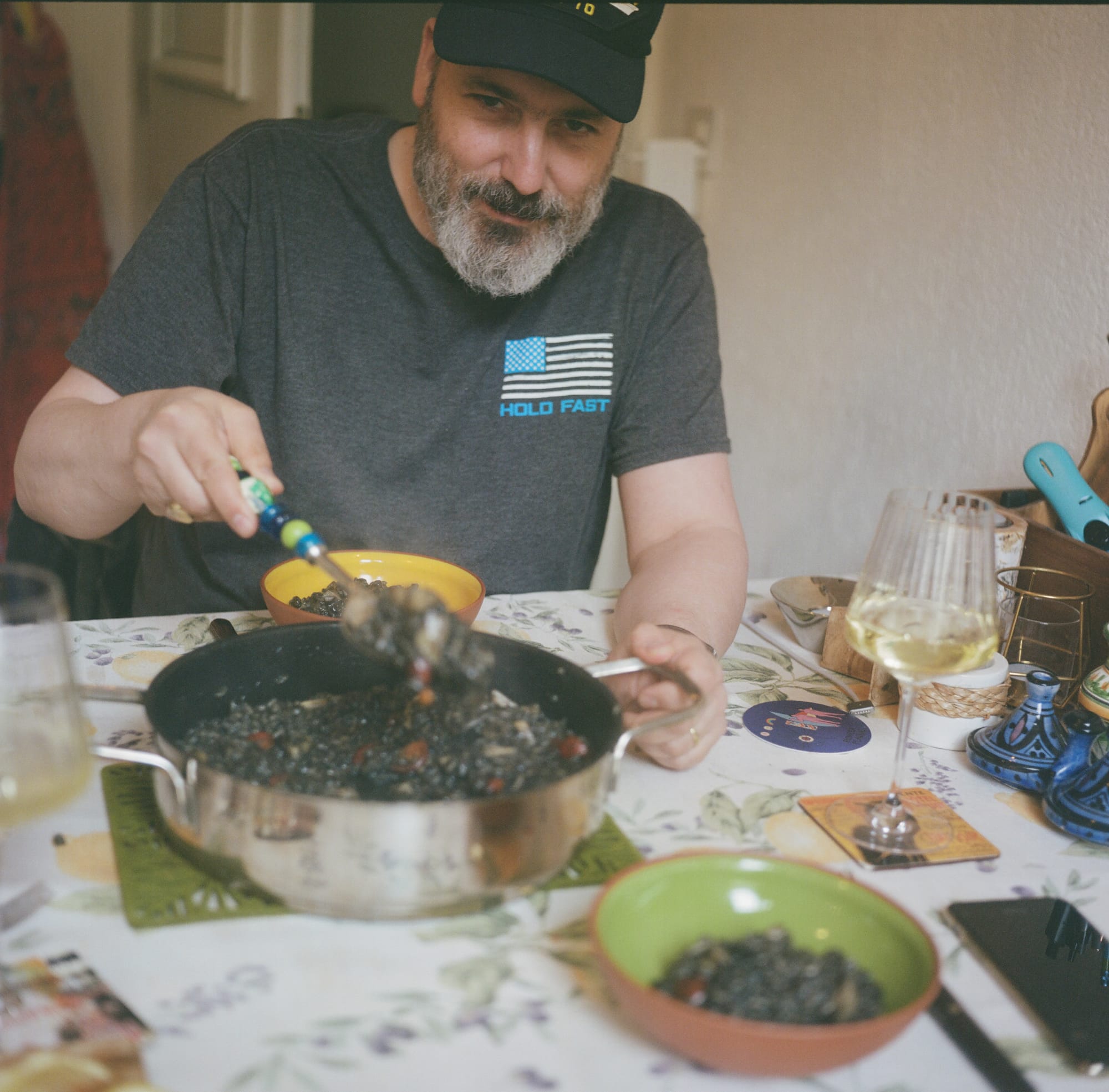What to eat CROATIA 🇭🇷 Crni rižot
Stirring constantly is the best way to ensure consistency but also is a tip of a hat to the likely origin of the dish in the Republic of Venice and Venetian rule over the Croatian side of the Adriatic.

Crni rižot
Published September 13, 2024 · by Amanda Rivkin Häsler
Croatia is a country comprised of regional dishes with no one stand out national dish, which made selecting one representational dish an extraordinarily difficult task. However, the Croatian coast is perhaps both the country’s most famous asset as well as its most touristed, and the Adriatic coastline of Croatia’s most distinctive and coveted dish may very well be crni rižot.
Typically served as a light lunch, the website Taste Atlas describes crni rižot as a “staple of many Dalmatian taverns (konoba) and restaurants.” It is also sometimes prepared as a Christmas Eve dish in the region. Cuttlefish or squid ink provide the color that gives the rice its name (crni is black in Croatian), though additional shellfish such as mussels, clams and crab are commonly added. The addition of squid ink also means this is a risotto-style dish rich in antioxidants, on top of the protein and iron other aspects of the ingredient list bring.

What crni rižot does not lack for in flavor it does in terms of a clear origin story. It is believed that the dish entered the Dalmatian culinary lexicon during the centuries that contemporary Croatia, notably the coastline, were under Venetian rule. From the fifteenth until the eighteenth century, Venice ruled over the Croatian side of the Adriatic. However, conflicts between the Venetians and the Croats are recorded as early as the seventh and eighth centuries.
Venice first acquired part of the territory through a 1409 purchase, though it was not fully consolidated until 1420. In 1797, the Republic of Venice lost its Adriatic holdings through the conquests of Napoleon Bonaparte and the Austrian Habsburgs. In between, the peak of Venetian rule came after the 1718 Treaty of Passarowitz, which expanded the Republic of Venice to include Sinj, Imotski and Vrgorac. Venice controlled stretches of land from Istria to coastal Montenegro plus all the Dalmatian islands and the mainland from the Velebit mountains to the northern borders of the Republic of Ragusa.
Despite the tension and occupation, the cultural and culinary influences were strong and also extremely delectable. Risotto is of course most commonly associated with Italy, and the arborio or carnaroli varieties of rice used for crni rižot come from the northern part of Italy. Arabs most likely first introduced rice to the northern Mediterranean cuisines via Spain and Sicily. The marshes of the Po River in Italy proved ideal for cultivation as the popularity of the new grain spread from Naples to northern Italy. Spices imported from the Orient also added flavor. Indeed, a similar dish known by a near identical name, arròs negre, exists in the Catalan and Valencian regions of eastern Spain.

Cuttlefish or squid was selected simply because of its abundance and availability in the waters of the Adriatic. As part of the preparation of crni rižot, squid must be cleaned and its innards as well as the tiny beak and the ink sack must be removed, though this is the only part that must be set aside and handled carefully less it burst. The squid can then be chopped or sliced into smaller parts. In modern times, of course it is possible to be spared such a delicate and dangerous task and purchase squid ink on its own for food coloration from the store.
As with all risottos, crni rižot must be carefully stirred and liquid added in over time, not in one go, less it becomes sticky or clumpy rather than smooth and creamy. Stirring constantly is the best way to ensure consistency but also is a tip of a hat to the likely origin of the dish in the Republic of Venice and Venetian rule over the Croatian side of the Adriatic. While slow-cooked, the dish is not terribly time-consuming or requiring of too much preparation, but the stirring constantly and slow addition of water are the main secrets of a successful crni rižot.

Recipe
Ingredients:
2 onions
Olive oil
Salt
1 clove of garlic
250 grams of calamari rings
250 grams of scallops
120 grams of saltwater baby shrimp
Dashi or vegetable or fish bouillon
2 cups risotto rice
1/3 of a cup of dry white wine like Sancerre or Croatian wine, if available
Nero di seppia
Butter
6-8 cherry tomatoes (depending on size), for garnish
Parsley, for garnish
Lemon (optional)
Step 1: Chop the onions and add to a pan with olive oil on low heat. Add a pinch of salt. Allow time for onions to caramelize.
Step 2: Once onions have caramelized, add diced garlic.
Step 3: Wash all seafood. If you like, cut into smaller pieces so crni rižot can be consumed by the forkful instead of with a knife. Add to onions and garlic. Keep on low heat.
Step 4: Prepare stock and set aside.
Step 5: Add rice to seafood and onions and stir. If using scallops, start with them, then add calamari rings and last just before the rice the shrimp. Slowly begin to add stock. Add white wine intermittently. Leave uncovered and stir regularly, every few minutes, once rice begins to have dry appearance, add more stock.
Step 6: At the very end, add the nero di seppia or squid ink for the black color. Add a tablespoon of butter for extra richness.
Step 7: Garnish with halved or quartered cherry tomatoes and parsley. Serve with lemon, optionally.
Tips, tricks and notes:
We know Croatian culinary purists will mock and guffaw at the idea of using dashi. We apologize, but have discovered it makes a stellar risotto stock over time. This is also why we have added the tagline, “old world, new flavors.”
Not everything we will do is faithful, authentic and some of what we do is downright original in flavors. Different nations react differently to outsiders having their hand at creative experimentation with something so sacred as a national dish. Only respect is meant with our contrivances. With gratitude especially to those who embrace a quirk or change offered up.
Learn where to eat Croatian food in Switzerland.
Follow our social media pages @swissglobaldining on Instagram, TikTok and YouTube